St Lukes Community Centre
Site Description: St.Luke’s community centre has a collection of small allotments and some leftover space behind the building for growing.
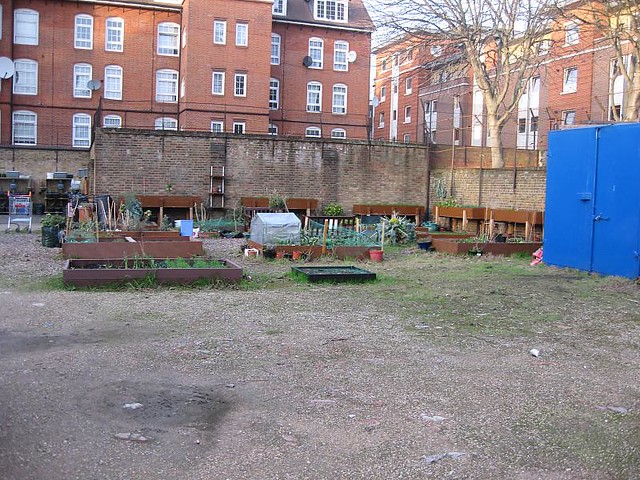
Storytelling: ‘I don’t exactly think Tesco’s are going to be quaking in their boots, that we’re all going to be living the good life anytime soon, but it’s more about the process, it’s about supplementing what you’re eating, it’s about the calming nature of it, soothing. Its about the investment, rather than just nipping down the shops every night after work to buy a bag of lettuce, you just nip out the back of your house and pick something up that you’ve seen grow and fought the slugs off of for weeks, and you really feel like you’ve earned it. So there’s lots of reasons for doing it, and obviously the education and people knowing where it comes from and the fascinating processes that get it there can’t hurt. So I don’t think it’s a case of living off a window box, but there’s so many other benefits, especially in difficult economic times, I would imagine.’ (Participant C)
Opportunities: Willing and engaged individuals, a large outdoor space, and an excellent site manager and initiative, St.Luke’s also has good links to IT centre for workshops.
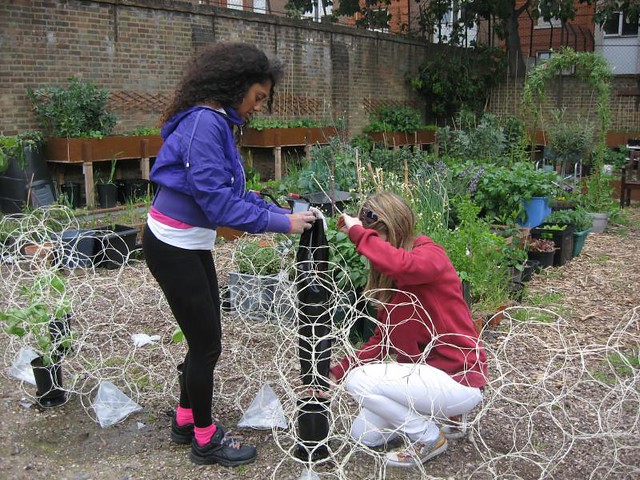
Challenges: To divide the small space vertically, to enhance a community spirit, introduce more basic growing skills, to encourage younger people to use the centre.
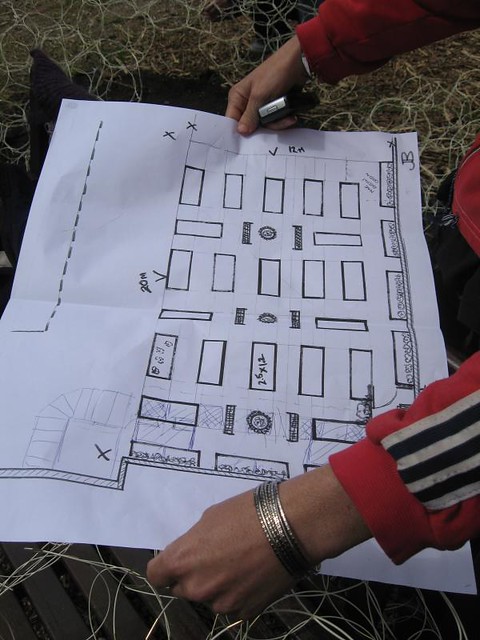
The Aims: To develop a scheme with a larger group of people to add to the allotment site, introducing vertical growing frames and environmental monitoring.
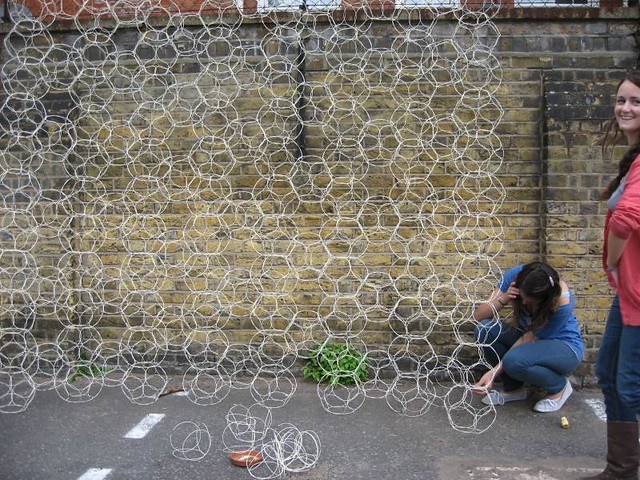
Intervention: Large-scale outdoor vertical growing
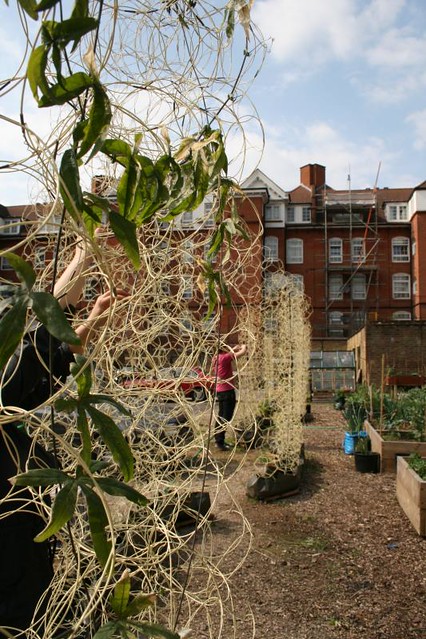
Background Research & Expertise: Vertical growing
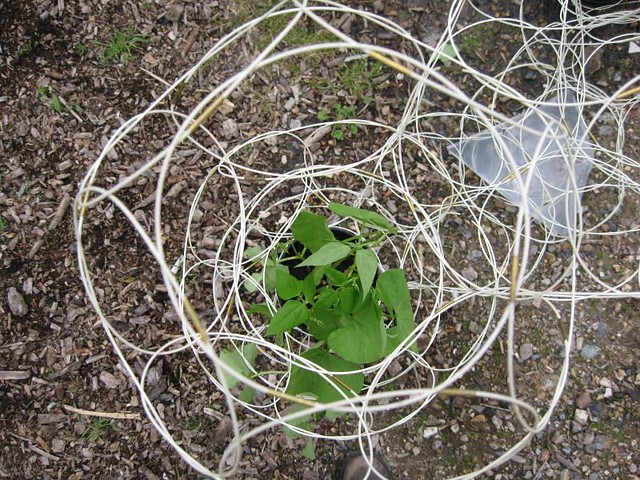
Dream scenario: ‘to keep this as a centre where we can offer training and support for people, and I suppose, develop a bit of a nursery bed, but also try to get people doing it a bit nearer to where they live.’ (Participant 0)

Key insights/ inspirational triggers for design: ‘because a lot of the people that I work with in this area don’t have any outside space, or very little outside space, and there is actually very little opportunity for planting in the ground, I suppose I’m always trying to learn ways of making the use of small terraces, balconies.’ (Participant 0)
Summary of findings from stage one interviews and grow kit workshop: Since each of the grow-kit workshops has taken place, there has been a mid-phase realisation that the ‘making’ process is more complex for amateurs to grasp than anticipated by the project team. One explanation for this is that previously, when the design team have collaboratively woven the grow structures it has been with other designers who have had some training or have some sensitivity to the process. There is embedded information in the system that participants do not have access to. This was perhaps least problematic with the NFP Synergy site, where the participants had previously been members of an office knitting circle. This equipped them with some confidence, knowledge and skills in making.
One idea was that there could be more specialised workshops facilitated by the design team for participants on weaving and making, spatial design, observing and documenting and planting and tending. This realisation will help us in the design of the final workshop with all of the participants.
The design team have admitted to a desire to control certain aspects of the process. There is a resistance to hand over parts of the process that are enjoyable or rewarding. It was felt that it would be helpful to become clearer about what roles the designers in the team take at different stages of the process. This needs to be more clearly defined (i.e. when and how involved a designer is in making, facilitating and organising each of the groups of participants). On different sites there are different levels of control and different knowledge needed.
An early observation is that NFP Synergy research office was the most successful of the grow kit workshops. Some of the factors that might have effected this are: they already have a social gathering designed into their working schedule, there have a knitting circle and are familiar with craft resurgence, they are a research office and are comfortable with the research aspect of the project, they are all women. Byam Shaw has been identified as the most challenging of the sites so far. Some of the factors that seem to have led to this are the space restrictions and how this growing initiative sits alongside other similar initiatives on site. The participants don’t seem to know what they want to get out of the process and it is unclear whether they are collaborators or competition on site.
The Bio-wall vertical growing structure itself has become a benchmark for the success of each of the grow-kit workshops utilising this component of the grow-kit.
See our photo journal for St Lukes Community Centre on Flickr here!